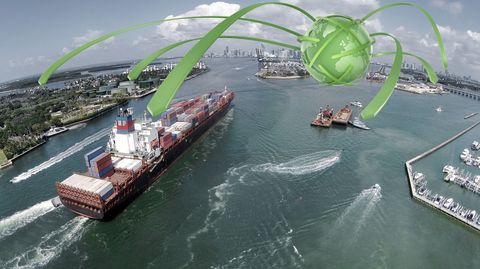With the global economy experiencing some tough conditions during 2015, businesses and policymakers worldwide have been giving a lot of thought to the best strategies of removing barriers to trade on a global basis.
Data from the World Trade Organization (WTO) recently demonstrated that the downturn in international trade observed in a previous monitoring report continued into the second quarter of 2015, with global economic growth remaining modest and unevenly distributed across various countries and regions.
This led to a lowering of the WTO's forecast for world merchandise trade volume growth for 2015 to 2.8 per cent, with the estimate for 2016 also cut to 3.9 per cent, suggesting the current level of sluggish growth could continue to be an issue for much of the immediate future.
To cast light on the reasons behind this, the global trade body recently published its director-general's annual report on trade-related developments, finding that restrictive commercial policies could be a key factor in preventing growth from accelerating to the rate that the world's economy requires.
The scale of the problem
According to the WTO's analysis, which covers the period from October 2014 to October 2015, WTO members are not actively introducing new trade-restrictive measures at the moment, but may not be doing enough to remove the barriers that currently exist.
Despite the risk posed by the accumulation of trade restrictions at a time of economic uncertainty, 75 per cent of all trade-restrictive measures introduced since 2008 are presently still in place - a disappointing figure given that many of the WTO's members have vocally pledged to tackle this problem.
Indeed, of the 2,557 restrictions implemented since October 2008, only 642 have been removed. Given that an average of 15 new measures are coming into force each month, comparable to the previous period, it means the stockpile of restrictions has actually risen by 17 per cent from the previous period.
Tackling the issue
The WTO welcomed the fact that the introduction of new trade-restrictive measures has remained relatively stable since 2012, with only 178 additional laws of this kind coming into force. However, the report underlined the importance of greater proactiveness in terms of eliminating existing restrictions and enhanced transparency with regard to non-border measures.
With this in mind, it was highlighted as a point of encouragement that the WTO's membership has been fairly active in adopting measures aimed at facilitating trade, with temporary and permanent initiatives both gaining momentum at the moment.
Members were shown to have implemented 222 new trade-facilitating measures during the period under review, representing an average of almost 19 per month. This marks the second highest figure since the beginning of the monitoring exercise in 2008, and is indicative of the fact that on this front at least, government bodies are showing awareness of their responsibility to drive forward progress in a more effective manner.
Moving forward
Summarising the problem, the WTO has been clear that governments must strive to be more proactive about dismantling the cumbersome regulations that are preventing companies at home and abroad from taking full advantage of the possibilities for growth a truly open international market could offer.
WTO deputy director-general Yonov Frederick Agah concluded the report by saying: "The uncertain global economic outlook continues to weigh on international trade flows. It shows that the continuing increase in the stock of trade-restrictive measures recorded since 2008 remains of concern."
He added: "WTO members should reflect on the central role of the multilateral trading system as a predictable and transparent framework helping members resist protectionist pressures and as a stable and inclusive platform for pursuing multilateral trade liberalisation."






